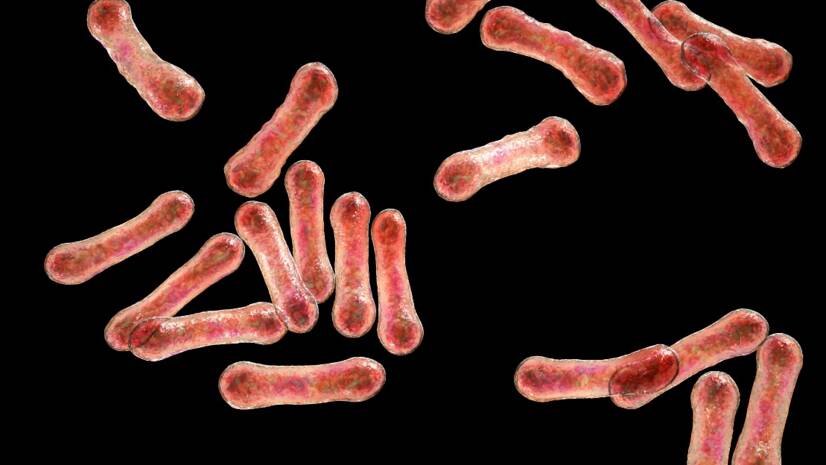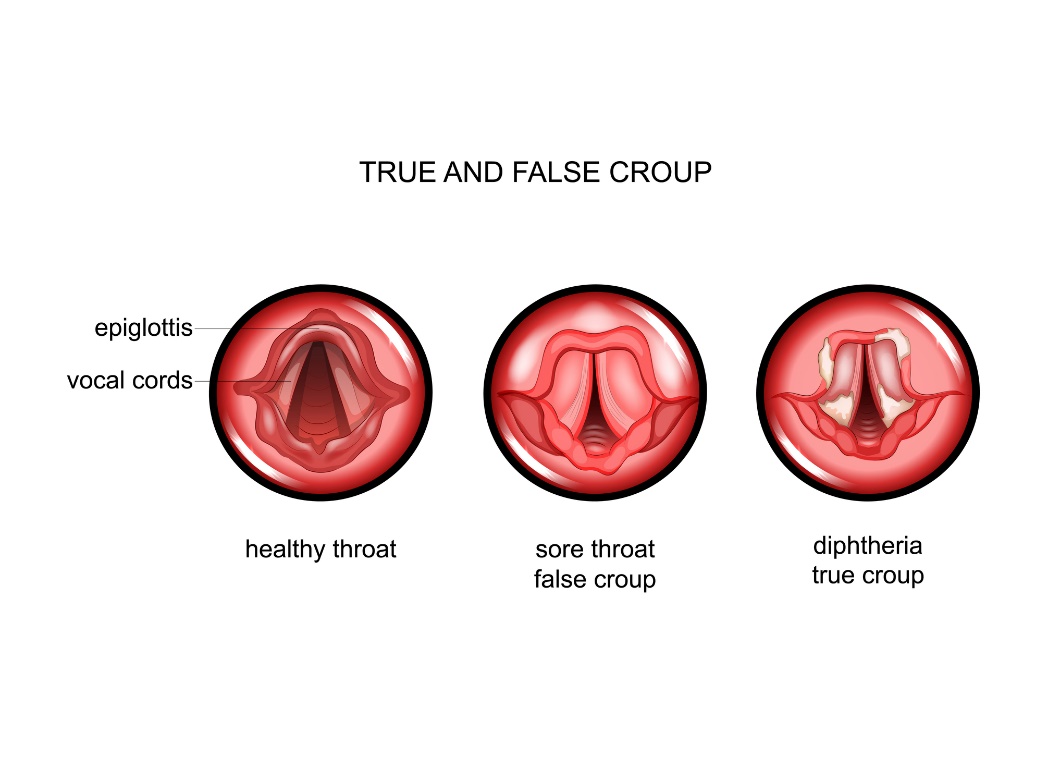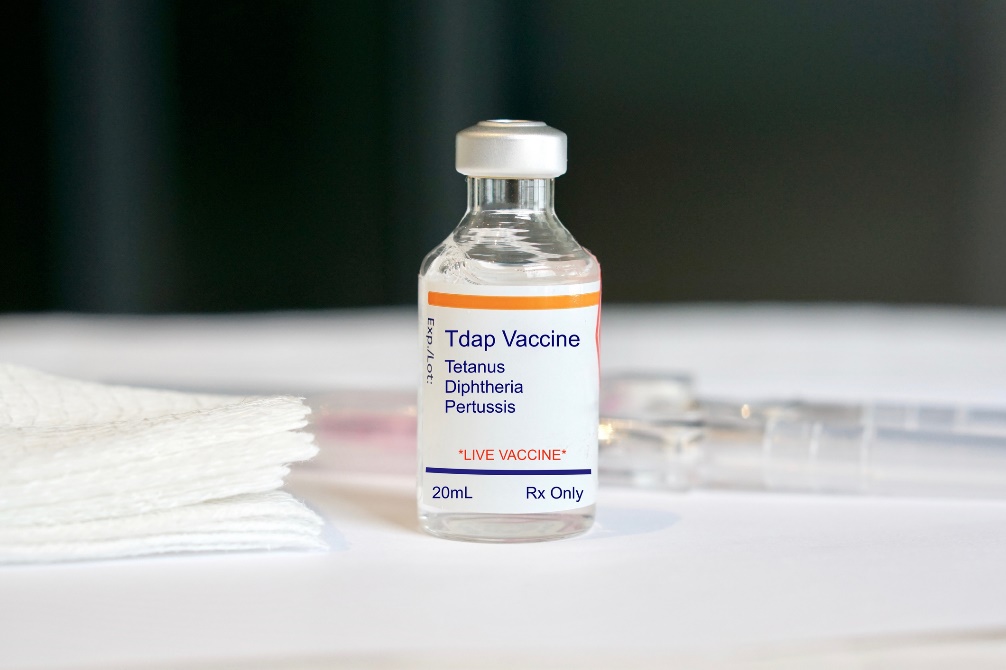- LEBL, Jan. Clinical paediatrics. 2nd edition. Prague: ISBN 978-80-7492-131-5.
- DOMORÁZKOVÁ, Eva. Očkování v praxi praktického lékaře. Praha: Vakcína: Grada, 1997. ISBN 80-7169-481-9
- Pediatriepropraxi.cz - Compulsory vaccination of children. Pediatrics for practice. Translated from English by Mgr. Alena Machová, Bc. Martina Suchanová
- healthline.com - What is diphtheria? Healthline. Daniel Murrell, M.D.
- medicalnewstoday.com - Everything you need to know about diphtheria. Medical News Today. Elizabeth Thottacherry, M.D.
What is diphtheria? Causes, symptoms and vaccination

Diphtheria is an acute infectious disease primarily affecting the upper respiratory tract. It is a worldwide disease, but its incidence has been significantly reduced by vaccination. Why does diphtheria occur and how does it manifest itself? What is the current situation worldwide?
Most common symptoms
- Malaise
- Headache
- Sore Throat
- Pain when swallowing
- Hoarseness
- Spirituality
- Fever
- Increased body temperature
- Nausea
- Indigestion
- Defence
- The Island
- Full nose
- Swallowing disorders
- Dry cough
- Muscle weakness
- Reddened skin
- Redness of the conjunctivae
- Winterreise
- Enlarged lymph nodes
Characteristics
Diphtheria is an infectious bacterial disease. The causative agent of diphtheria invades the mucous membrane of the upper respiratory tract and forms a typical grey-yellow-white coating. The disease manifests itself mainly in the larynx, tonsils and nasal mucosa.
The disease is now rare in developed countries.
The cause, course, symptoms, treatment, vaccination and much more interesting information can be found in the following article.
What is diphtheria?
Diphtheria is an acute infectious disease caused by an anaerobic bacterium called Corynebacteriumdiphtheriae (corynebacteria).
It is a bacterium that can only infect humans.
The disease can run its course with mild symptoms, but left untreated can cause a life-threatening condition. In the past, before the era of antibiotics and vaccines, it was a disease with a high mortality rate.
The infection and inflammatory process are mainly localized in the throat, tonsils, nasal mucosa and in some cases on the skin or conjunctiva of the eye.
It is an inflammatory process in the mucous membranes accompanied by the formation of plaque pseudomembranes, swelling (enlargement) of the cervical lymph nodes and high body temperature.
If left untreated, the disease is severe, with nerve damage and subsequent paralysis of the vocal cords, swallowing muscles and soft palate.
In the most severe cases, there is inflammation of the heart muscle and damage to kidney and nervous system function.
Diphtheria and its occurrence
Diphtheria is currently classified as a disease of minimal incidence in developed countries.
In the past, however, diphtheria was one of the most common causes of death. Thanks to the development of vaccines, it has receded into the background.
If countries vaccinate a high percentage of the child population, the disease is almost non-existent in that country.
There was a well-known diphtheria epidemic in the countries of the former Soviet Union (Russia, Ukraine, Belarus). After its collapse, compulsory vaccination was temporarily neglected, resulting in an epidemic increase in the disease with a high number of deaths.
Diphtheria still occurs in some developing countries, especially in poor countries in Africa, Asia and Latin America.
Causes
The causative agent of the disease is...
Diphtheria is an infectious bacterial disease. It is transmitted by the bacterium Corynebacterium diphteriae.
The bacterium has a characteristic rod-shaped appearance. It is immobile. It is a resistant species of bacterium. It is resistant to various types of surfaces and textiles in the long term.
The pathogen is spread by droplet and direct transmission mechanisms.
The bacterium can be transmitted through the air and through broken skin (wounds). It most often enters the body through the larynx and nasal mucosa.
The source of infection is the infected individual. The source of infection is the sick patient, but also asymptomatic carriers of the infection.
The bacterium produces 3 toxins, namely cytotoxin (destroys local surrounding cells), cariotoxin (affects the heart) and neruotoxin (affects the nervous system).
Symptoms
Initially, diphtheria manifests itself in a similar way to angina. However, underestimation of the diagnosis and inappropriate treatment leads to the development of the disease and deterioration of the general state of health.
Inflammatory processes occur with the formation of plaques (pseudomembranes) and necrosis of infected tissues. There is a deterioration of swallowing and breathing itself.
Summary of possible symptoms of diphtheria:
- High body temperature - fever
- Fatigue and malaise
- General weakness
- Malaise and weakness, malaise, weakness and malaise.
- Chills
- Presence of a coating of pseudomembranes in the throat
- Pain and swelling of the throat
- Swelling of the cervical nodes
- Breathing difficulties
- Shortness of breath and cough
- Wheezing when breathing
- Hoarseness
- Excessive salivation
- Painful swallowing
- Nasal discharge
- Headache
- Lesions (damage) on the skin
- Lesions on the conjunctiva of the eyes
- Lesions in the genital area

Diagnostics
The key to diagnosis is to see a doctor early when common initial symptoms such as sore throat and raised body temperature occur.
The doctor will take a medical history, assess clinical symptoms and examine the patient by looking and feeling in the upper respiratory tract. He will focus on travel history, enlarged cervical lymph nodes, redness and swelling of the throat and the presence of plaque.
He will diagnose the presence of diphtheria bacteria by swabbing the affected area and subsequent microbiological examination in the laboratory.
Symptoms may be vague and similar to tonsillitis. Therefore, a swab should always be taken from the throat, nose or other site of infection.
As part of the diagnosis, blood sampling is performed to determine the presence of the inflammatory process in the body and the pathogen in the patient's bloodstream.
By confirming the presence of Corynebacterium diphtheriae in the saliva or blood, diphtheria is subsequently diagnosed.
In some cases, radiological examination and ECG (electrocardiography) are indicated for differential diagnosis and to determine the extent of the disease.
Course
The incubation period of diphtheria lasts approximately 2-5 days and the first symptoms appear.
Initially, diphtheria has symptoms similar to tonsillitis.
The infected individual is tired, has a high temperature and feels a sore throat. There is a lack of appetite, general weakness and malaise.
The diphtheria bacterium damages the mucous membranes in the upper respiratory tract, which die as a result of the infection. Distinctive yellow-white plaques - pseudomembranes - form on the surface of the respiratory tract (especially in the oral cavity).
The bacterial toxin causes necrosis of the infected tissues and forms grey-white pseudomembranes composed of dead cells, fibrin and leukocytes.
As a result of the spread of the disease and the agitation of the lymph nodes in the neck, there are disturbances in swallowing, breathing and intake of food and fluids.
Such an enlarged neck is also known as a caesarean neck.
Diphtheria is most often manifested in the so-called pharyngeal form in the upper respiratory tract, especially in the larynx, tonsils and nasal mucosa. In rarer cases, the disease is manifested on the conjunctivae, skin or genital area.
The bacteria can also enter the bloodstream, where the toxins mainly damage myocardial (heart muscle) cells.
If the infection spreads and complications occur, the airways become impassable. This can lead to death. Severe diphtheria can lead to so-called malignant diphtheria, which is often accompanied by myocarditis or attacks on the individual's kidneys and nervous system.
Prevention and vaccination against diphtheria
Vaccination is the most effective protection against diphtheria.
It is currently vaccinated with a substance called DTaP, which is a vaccine against several serious diseases at the same time. The basic vaccination consists of a total of 3 doses of the vaccine.
The ideal date for the first dose of the vaccine is the 10th week of the child's life. The child receives all 3 doses in the first year of life.
The first dose is given in the third month of the newborn's life, the second dose 2 months later, and the third dose 6 months after the second dose.
Possible side effects after the vaccination may be local in the form of redness and soreness at the injection site. General in the form of slightly increased temperature and headache.
DTaP vaccine:
- D - diphtheria
- T - tetanus
- P - pertussis (whooping cough)
The vaccine is combined with a product against hepatitis B, haemophilus invasive infections and polio (poliomyelitis).
Vaccination in adulthood can be done every 15 years, as the acquired antibody level may decrease with age.
As this is a bacterial infection, there is no prevention except vaccination. However, it is possible to eliminate the risk of infection by observing hygiene standards and avoiding contact with potentially infected persons in at-risk developing countries.
If you have been in close contact with a person who has been diagnosed with diphtheria, contact your district doctor immediately. The doctor will take a blood sample and a respiratory swab to rule out or confirm diphtheria infection.
Early diagnosis and expert treatment with antibiotics is necessary.
Diphtheria is not currently prevalent in developed countries. Rapid diagnosis of the disease and isolation could therefore be problematic. Late initiation of treatment poses a high risk of health complications.
Prevention in the form of vaccination is therefore most effective.

How it is treated: Diphtheria
Treatment of diphtheria: Drugs and early antibiotics
Show moreDiphtheria is treated by
Other names
Interesting resources
Related










